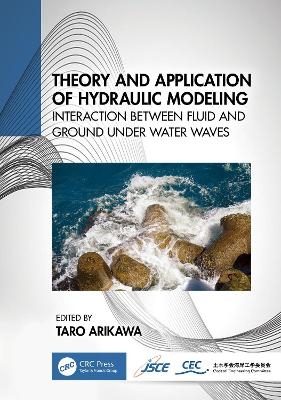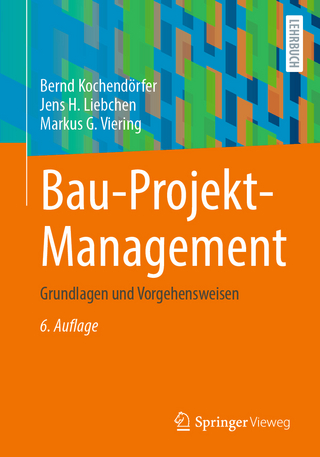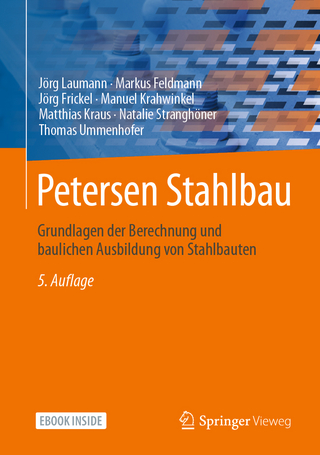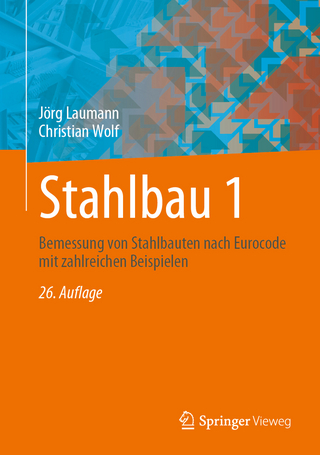
Theory and Application of Hydraulic Modeling
Interaction between Wave and Ground Motion
Seiten
2024
CRC Press (Verlag)
978-1-032-54413-7 (ISBN)
CRC Press (Verlag)
978-1-032-54413-7 (ISBN)
This edited volume from Japan’s Research Subcommittee on How to Handle Ground Materials in Hydraulic Model Tests presents readers with a state-of-the-art overview of experimental and computational methods used to address similarity scaling incompatibilities present in fluid-sediment flows.
This edited volume from Japan’s Research Subcommittee on Methodology for Dealing with Geomaterials in Hydraulic Model Experiments presents readers with a state-of-the-art overview of experimental and computational methods used to address similarity scaling incompatibilities present in fluid–sediment flows.
Readers will gain an understanding of complex phenomena in the boundary fields of hydraulics and geotechnical engineering. Chapter contributors focus on the phenomena that are affected by the interactions between fluid wave and ground in a complex field, which for many years have been challenging to process and model. In addition to describing the implementation of model tests and the concept of the law of similarity, this book contrasts these phenomena with the laws of similarity, describes models and numeral analysis methods, and explains important considerations using experimental case studies. Each chapter is written by leading researchers in Japan who are members of the Research Subcommittee on Methodology for Dealing with Geomaterials in Hydraulic Model Experiments. The chapters are closely linked but are written so that each can be read individually. Readers will be able to apply this knowledge to their work and to create models that more accurately simulate the interactions between wave and ground, allowing them to better understand these phenomena and devise more appropriate strategies for defense and so on when necessary.
This collection provides information that can be used by young researchers and post-graduate students in the boundary fields of hydraulics and geotechnical engineering who aim at becoming civil engineers, and it will be of particular value to practicing engineers of all experience levels who must regularly analyze complex interactions between fluids and ground.
This edited volume from Japan’s Research Subcommittee on Methodology for Dealing with Geomaterials in Hydraulic Model Experiments presents readers with a state-of-the-art overview of experimental and computational methods used to address similarity scaling incompatibilities present in fluid–sediment flows.
Readers will gain an understanding of complex phenomena in the boundary fields of hydraulics and geotechnical engineering. Chapter contributors focus on the phenomena that are affected by the interactions between fluid wave and ground in a complex field, which for many years have been challenging to process and model. In addition to describing the implementation of model tests and the concept of the law of similarity, this book contrasts these phenomena with the laws of similarity, describes models and numeral analysis methods, and explains important considerations using experimental case studies. Each chapter is written by leading researchers in Japan who are members of the Research Subcommittee on Methodology for Dealing with Geomaterials in Hydraulic Model Experiments. The chapters are closely linked but are written so that each can be read individually. Readers will be able to apply this knowledge to their work and to create models that more accurately simulate the interactions between wave and ground, allowing them to better understand these phenomena and devise more appropriate strategies for defense and so on when necessary.
This collection provides information that can be used by young researchers and post-graduate students in the boundary fields of hydraulics and geotechnical engineering who aim at becoming civil engineers, and it will be of particular value to practicing engineers of all experience levels who must regularly analyze complex interactions between fluids and ground.
Taro Arikawa is a Professor specializing in coastal engineering and tsunami disaster prevention at Chuo University Tokyo, Japan. He obtained his BS, MS, and Ph.D. from the University of Tokyo in 1995, 1997, and 2000, respectively. He acts as Secretary and Chair for subcommittees of several societies, including the Japan Society of Civil Engineers, Architectural Institute of Japan, Japan Association for Earthquake Engineering, and the Engineering Academy of Japan.
1 Introduction
2 Methodology of Model Tests
3 Concept of the Law of Similarity in Model Tests
4 Case Study of Model Experiments
5 Numerical Calculation Methodology for Wave–Seabed Interaction
6 Future Challenges
| Erscheinungsdatum | 19.04.2024 |
|---|---|
| Zusatzinfo | 35 Tables, black and white; 75 Line drawings, black and white; 69 Halftones, black and white; 144 Illustrations, black and white |
| Verlagsort | London |
| Sprache | englisch |
| Maße | 174 x 246 mm |
| Gewicht | 621 g |
| Themenwelt | Technik ► Bauwesen |
| Technik ► Maschinenbau | |
| Technik ► Umwelttechnik / Biotechnologie | |
| ISBN-10 | 1-032-54413-9 / 1032544139 |
| ISBN-13 | 978-1-032-54413-7 / 9781032544137 |
| Zustand | Neuware |
| Informationen gemäß Produktsicherheitsverordnung (GPSR) | |
| Haben Sie eine Frage zum Produkt? |
Mehr entdecken
aus dem Bereich
aus dem Bereich
Grundlagen und Vorgehensweisen
Buch | Softcover (2021)
Springer Fachmedien Wiesbaden GmbH (Verlag)
37,99 €
Grundlagen der Berechnung und baulichen Ausbildung von Stahlbauten
Buch (2022)
Springer Vieweg (Verlag)
159,98 €
Bemessung von Stahlbauten nach Eurocode mit zahlreichen Beispielen
Buch | Hardcover (2024)
Springer Vieweg (Verlag)
59,99 €


